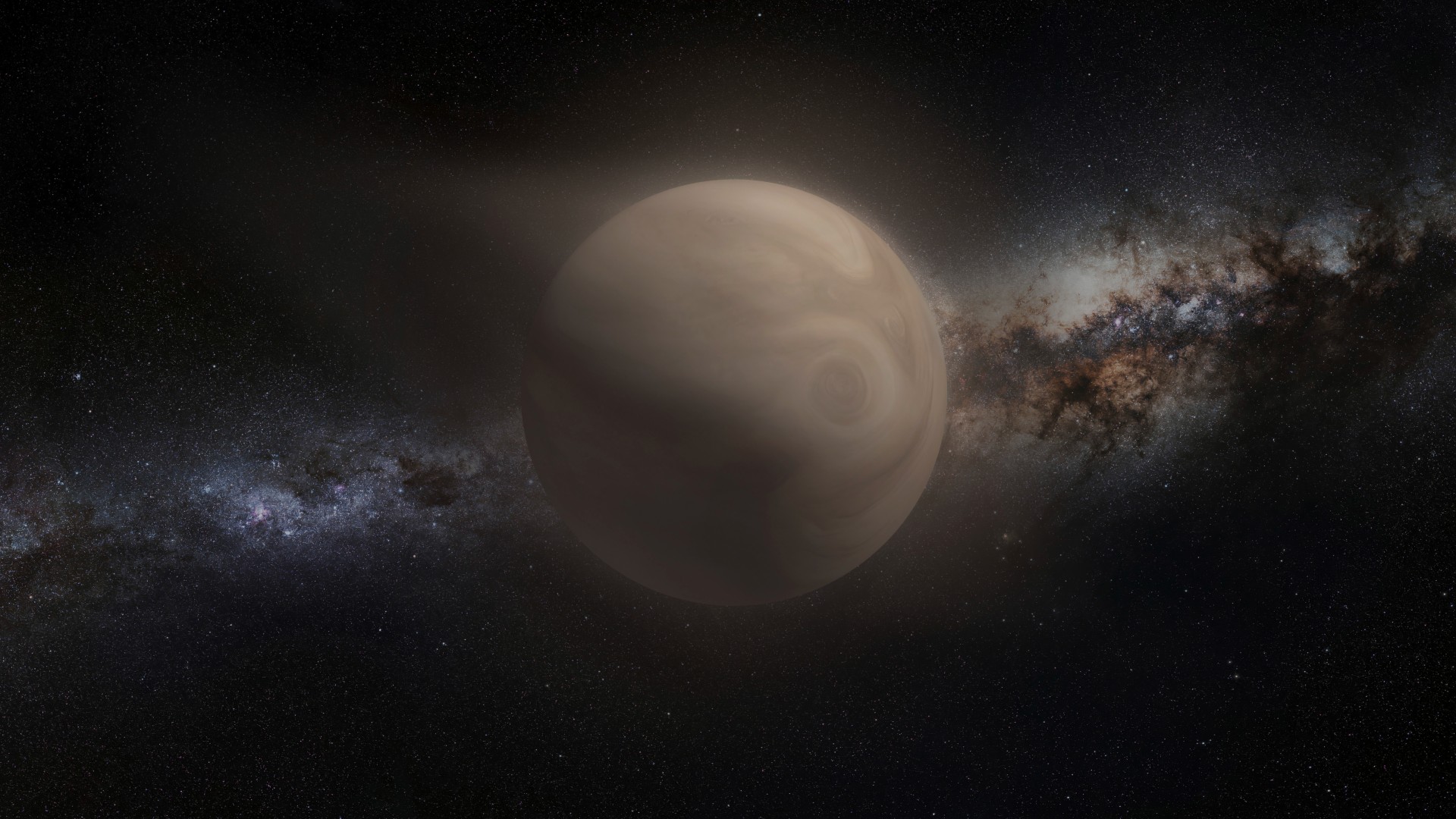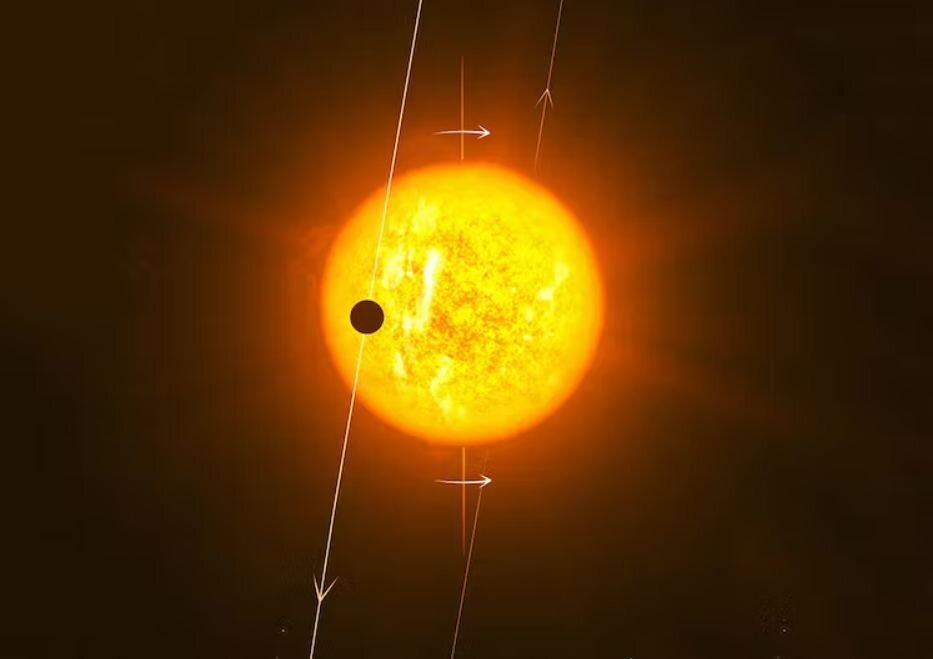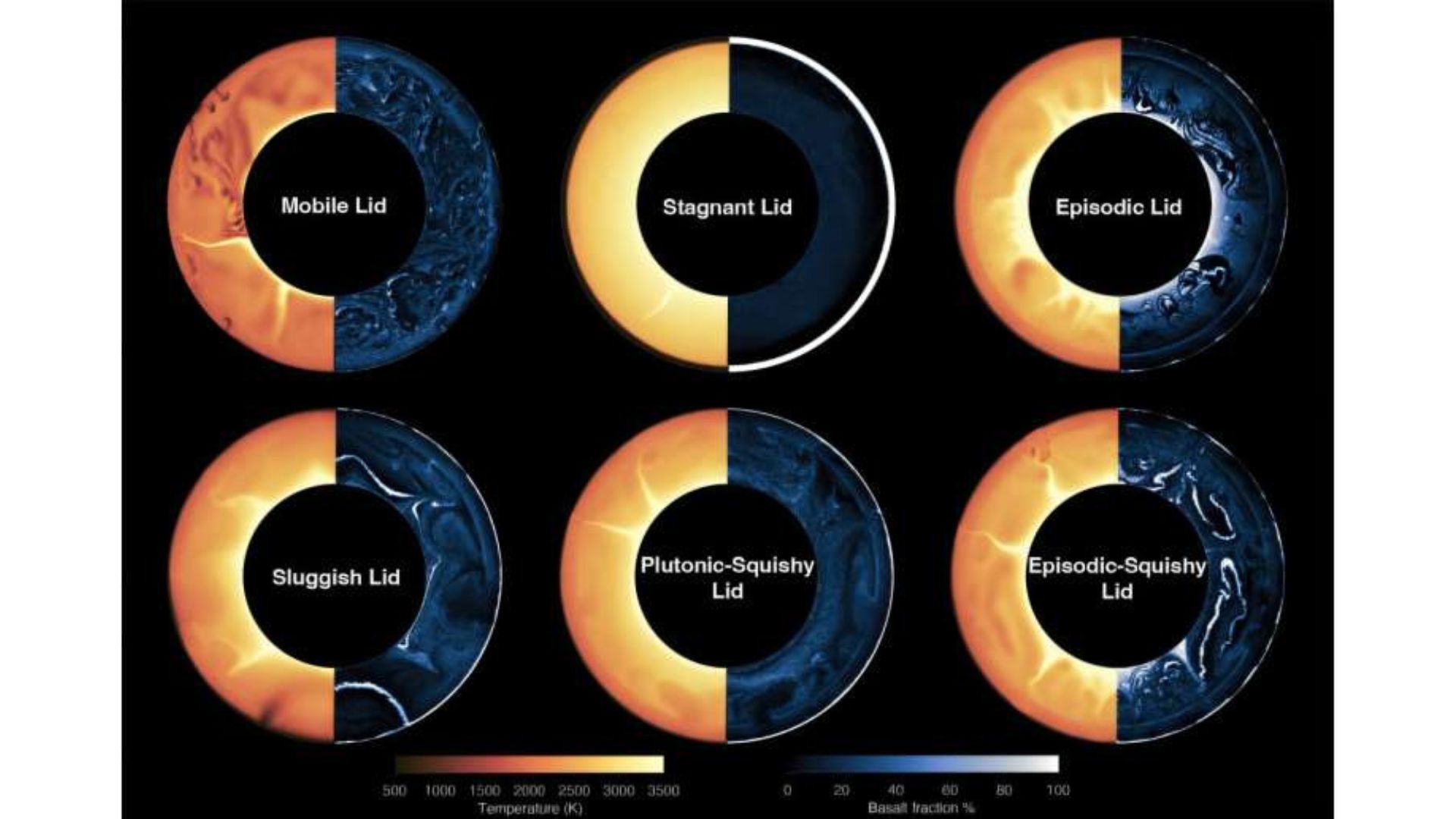
Strange 'puffy' alien world breaks every rule for how planets should behave
A low-density, puffy planet orbiting relatively far from a young star in a nearly perpendicular orbit. What's going on?

If you think you've met the wildest exoplanet yet, you haven't learned about TOI-4507 b.
This strange world, which sits about 578 light-years from the solar system, breaks almost every known rule for how planets should behave. First off, it orbits a very young star that's just 700 million years old, making it one of the youngest planetary systems ever discovered. The planet is 9x wider than Earth, but only 30 times its mass. That means it's as wide as Jupiter but less than a tenth of its mass, a very light planet. This odd combination of large size and small mass classifies TOI-4507 b as a "super-puff" — an exoplanet with a large, extended atmosphere.
Second, TOI-4507 b is on a nearly polar orbit; it swings around its star almost perfectly perpendicular to the star's rotation. It has a relatively close orbit, completing an entire revolution in just 105 days — but this also makes it one of the longest-period super-puffs ever found. So we have a low-density, puffy planet orbiting relatively far from a young star in a nearly perpendicular orbit. What's going on?
With TOI-4507 b, there are more mysteries than answers. But the researchers who revealed the discovery of the planet ruled out some possibilities. In a pre-print study that has yet to be peer-reviewed and submitted to arXiv, they used a combination of data from NASA's Transiting Exoplanet Survey Satellite and ASTEP, a planet-hunting telescope in Antarctica.
Many super-puffs get their inflated atmospheres from tidal heating. If a planet orbits close to its star in an elliptical orbit, then its interior will stretch and squeeze as the gravitational strength of the star changes. This kind of tidal heating leads to the molten cores and liquid oceans of many moons in the outer solar system, and in other systems, it can heat up a planet, giving it an extended atmosphere.
But TOI-4507 b is too far from its star for tidal heating to play a significant role.

So perhaps it's not as big as we think it is. Some planets may have large ring systems that block light just as easily as a planet can, leading to the appearance of large planetary bodies. But while TOI-4507 b is relatively cold, it's not cold enough to support a ring system for very long.
Breaking space news, the latest updates on rocket launches, skywatching events and more!
Plus, something dramatic must have happened in this planet's past. This event might have been quick and catastrophic, causing a misalignment of the protoplanetary disk with the star. Or it might have been slow and steady — for example, if another planet orbiting much farther out were tugging it into a new orbit.
All of these mysteries make TOI-4507 b ripe for follow-up studies. Because of its brightness and the low density of its atmosphere, TOI-4507 b makes a great candidate for observations with the James Webb Space Telescope, which should have the capabilities to determine what this mysterious planet's atmosphere is made of — and hopefully unlock some more clues as to how this strange super-puff came to be.

Paul M. Sutter is a cosmologist at Johns Hopkins University, host of Ask a Spaceman, and author of How to Die in Space.
You must confirm your public display name before commenting
Please logout and then login again, you will then be prompted to enter your display name.
